- News
- Reviews
- Bikes
- Components
- Bar tape & grips
- Bottom brackets
- Brake & gear cables
- Brake & STI levers
- Brake pads & spares
- Brakes
- Cassettes & freewheels
- Chains
- Chainsets & chainrings
- Derailleurs - front
- Derailleurs - rear
- Forks
- Gear levers & shifters
- Groupsets
- Handlebars & extensions
- Headsets
- Hubs
- Inner tubes
- Pedals
- Quick releases & skewers
- Saddles
- Seatposts
- Stems
- Wheels
- Tyres
- Tubeless valves
- Accessories
- Accessories - misc
- Computer mounts
- Bags
- Bar ends
- Bike bags & cases
- Bottle cages
- Bottles
- Cameras
- Car racks
- Child seats
- Computers
- Glasses
- GPS units
- Helmets
- Lights - front
- Lights - rear
- Lights - sets
- Locks
- Mirrors
- Mudguards
- Racks
- Pumps & CO2 inflators
- Puncture kits
- Reflectives
- Smart watches
- Stands and racks
- Trailers
- Clothing
- Health, fitness and nutrition
- Tools and workshop
- Miscellaneous
- Buyers Guides
- Features
- Forum
- Recommends
- Podcast
review
£1,199.99
VERDICT:
Easy-to-use power-measuring system offering masses of repeatable data. Simple to set up and move between bikes
Weight:
356g
Contact:
www.madison.co.uk/products/cycling/electronics/power-meters/vector-2-power-meter-road-keo-dual-pedal-system-standard-12-15-mm/
At road.cc every product is thoroughly tested for as long as it takes to get a proper insight into how well it works. Our reviewers are experienced cyclists that we trust to be objective. While we strive to ensure that opinions expressed are backed up by facts, reviews are by their nature an informed opinion, not a definitive verdict. We don't intentionally try to break anything (except locks) but we do try to look for weak points in any design. The overall score is not just an average of the other scores: it reflects both a product's function and value – with value determined by how a product compares with items of similar spec, quality, and price.
What the road.cc scores meanGood scores are more common than bad, because fortunately good products are more common than bad.
- Exceptional
- Excellent
- Very Good
- Good
- Quite good
- Average
- Not so good
- Poor
- Bad
- Appalling
Garmin's Vector 2 is the second incarnation of its pedal-based power measurement system. The changes to the system are fairly minor, but they are improvements, making the pedals easier to set up and switch between bikes.
It's an expensive system but one that can give you a ton of information, and that will appeal to a lot of data-hungry riders out there. The power meter landscape is changing, though, and the Vectors don't have the pedal-measuring space to themselves any more: both Powertap and BePro are shipping systems now, and both are cheaper than the Vectors, the BePros considerably so (around £520). We have both in for test at the moment so look out for reviews soon; it's too early to say whether they're directly competitive.
Find your nearest dealer here
Buy these online here
What you get
In the box, you get a pair of Look Kéo-compatible pedals (the pedal bodies are made by Exustar) and a pair of pedal pods that process the data from the strain gauges and accelerometers in the pedals, and transmit it via ANT+.
You also get a pair of pedal cleats and the relevant bolts and washers, and a couple of pedal axle washers that you may or may not need. There's a 15mm crow foot torque wrench adapter in there too. You also get an ANT+ USB stick that you can use to transmit firmware updates wirelessly to the pedals.
Weight
These are the weights of the various components according to the road.cc Scales of Truth:
Pedals – 304g per pair
Pedal pods - 52g per pair
Cleats – 50g per pair
Cleat washers and screws – 26g (total)
The weight of the cleats, washers and screws are pretty much the same for any Look Kéo-compatible system. Compared to a racing pedal, you'll be adding somewhere between 100g and 200g to the weight of your bike.
What's changed from version 1?
The main change is to the pods that transfer the data from the pedals to your ANT+ device. In the first incarnation of the pedals these were made of metal, and cinched against the axle by the pedal spindle. In the Mark II pedals they're plastic, and they have a hinged band that you tighten against the axle with a grub screw. The axle is a slightly different shape to accommodate this.
Because of that change, they're easier to fit. You can fit the pedals with a standard spanner – they don't have an Allen head in the axle because that's where all the connections are for the pod – and tighten them up like a normal pedal. You don't have to do it to a specific torque any more, although if you like to be consistent the box contains a crow foot 15mm head that you can fit to your torque wrench. Once the pedal is on, you just tighten the pod into place and pop the connecting cap into the axle recess.
It takes a couple of minutes more than swapping normal pedals, but the Vectors are much easier to swap between bikes now, which is great news if you have a number of bikes you want to measure power on. The only proviso is that the grub screw in the hinged band of the pod isn't captive, so sooner or later you'll drop it on the floor of the shed and spend half an hour on your hands and knees swearing under your breath. Sooner, in my case.
Once the Vectors are on the cranks, you need to pair them with your bike computer. That's just a matter of getting your computer to search for ANT+ devices in the area. Then you set the correct crank length. Easy peasy. Another improvement in the pods from version 1 is the inclusion of a tiny LED monitor. It flashes in various different ways to alert you to problems with the installation, or just to let you know it's working. It's certainly easier than guesswork.
If you're using the Vectors for the first time, the system needs to know how the pods are orientated, so you have to set the installation angles.
'The device needs to know the precise angle at which the pedal is located in order to calculate the power accurately,' Andy Silver, Garmin's European fitness product manager, told us. 'It needs to be able to differentiate between tangential and radial force – standing force and moving force – and knowing the precise installation angle of the power helps define that information.'
In order to do this, you just sit on the bike and pedal up to 80-90rpm. You stick in that cadence range for a few seconds and that's job done. You only have to perform this part of the calibration process again if you swap the pedals to a different bike.
The second part of the calibration process is the 'static zero calibration' and you need to do it at the start of every ride. You just wake up the Vector system by spinning the cranks and then, with your feet unclipped from the pedals, hit 'calibrate' on your computer. A few seconds later and it's sorted.
You can also perform a manual recalibration to remove any residual torque from the system by back-pedalling five revolutions at any point during a ride.
The Vector system will work on the vast majority of cranks. There are two versions of the pedal, standard and large, with different thread lengths, the longer of which is designed for especially deep-section cranks, for example Rotor Flow and Specialized FACT. There are two different pedal pods too, one with a slightly longer tab.
One other equipment issue relates to non-round chainrings.
'Vector assumes constant angular velocity within a single crank revolution,' says Andy Silver. 'We've not determined how variable the angular velocity is using elliptical chainrings in real riding conditions to state what the impact would be on power values.
'This is likely a function of how elliptical the rings are and the pedalling style of the rider. But Vector does take multiple samples per crank revolution and has the ability to determine micro-cadence. This is therefore a potential enhancement for a future software release.'
The pedal pods might look a bit vulnerable to knocks and scrapes, but so far I've had no issues. You can't really ground them (the pedal will ground first) but you could conceivably catch them on a kerb; it's something to look out for but if you did total one then they're available for £59.99.
Garmin reckons the C2032 coin cell in each pedal pod will last 175 hours. I've put about half that into the Vectors and they're still going strong.
Using the Vectors
Using the Vectors is simple. You just ride. You don't even have to turn the system on/off. That's automatic.
I've mainly been using the Vector system with a Garmin Edge 1000 computer that gives you a whole load of different ways of using the data. You can view your current power figure, or your power as a 3-second, 10-second or 30-second rolling average to smooth the figures out and avoid huge peaks and troughs. You can view your average power, your watts per kilogram of body weight, and you can also set your training zones based on power.
There's also a specific power screen on the Edge computers (the screen grab is from an Edge 520), which shows you a bunch of metrics that the pedal is measuring. As well as your power output, it'll show you your left-right balance. I was particularly interested in this as a recent back injury affected one of my legs, but out on the road it didn't seem to affect my power balance, which was consistently within 2% of 50/50. Say it was consistently 60% to 40%, though. Realistically, what would you do with that information? Push harder with your weaker leg? I guess it would highlight an issue with mobility, an injury, or a problem with your bike setup.
Another thing it shows you is your cleat offset: basically, where you're pressing down on the pedal. It can be used to highlight issues with cleat setup. One thing it consistently showed me is that when I was trying hard, the offset tended to wander towards the outside of the pedal, which was more to do with the form of my pedal stroke than anything else. I did find it was something I could control by concentrating on a smooth revolution even when I was going full gas.
The Vector pedals suggested I might like to move my cleats so that my feet sat slightly inboard from where I'd set them. That worked fine until I started to need overshoes, at which point I did experience some rubbing of the pedal pods against the overshoes; they do slightly reduce the clearance you have there, and I do have wide feet.
Thirdly, the data screen shows the range of angles that you're putting power down through. If you're standing up and stamping on the pedals, it will be a lot smaller than if you're sitting and trying to smooth out your pedal stroke. I learnt early on with using the Vectors that for longer efforts, keeping the power window as wide as possible (ie, trying to apply power further through the pedal revolution) seemed to be the most efficient, and having access to this data has made me think about my pedalling technique more, and given me an objective basis for trying to improve it. You can widen that power window even further by pulling up on the pedals as well as pushing down; I found this useful sometimes for short efforts but not something I could consistently do.
The Vector pedals also use this power angle information to guess at how much time you're spending standing and seated on a ride. I haven't found that information particularly useful, nor could I really comment on whether it was accurate.
I also used the Vector pedals with my phone (Sony Xperia Z1 Compact), which has ANT+ capability, and the ipBike app for recording data. You don't get the option to calibrate the pedals using this setup but I still found the numbers to be what I'd expect, and comparable to those on the Edge 1000 for similar efforts.
The easiest place to view all the power data is in Garmin's Connect portal, which is probably what you'd default to uploading to if you were using an Edge computer. It gives you a bunch of graphs of the various metrics that you can analyse and zoom into at your leisure. Here's some of my data from the Roman Road Race in September:
There are a couple of obvious things to draw from this data. Firstly, for the half hour before I got dropped you can tell that I'm working really hard, because the graphs are spiking all over the place. Once I'm out the back and effectively time trialling on my own, the numbers settle down a lot, with the exception of a couple of sections where the back-markers regrouped and set up an impromptu chaingang.
Also, I was using shoes I hadn't set up using the Vectors and the cleat position needs adjusting a bit: you can see that both left and right offsets are well off zero. Power balance is 50/50 though, and the start and end points of my power phase on the pedal, as an average, are equal both sides too. I was trying to be smooth on the pedals, especially later in the race, but I'm better at that with my right leg than with my (weaker) left.
If you're predominantly a Strava user you can't access the more granular data, but you can get your power readings, which map Connect accurately enough. The pedals also supply cadence information.
Accuracy
We've been using the Vector system alongside a PowerTap hub-based system, and a Stages Cycling crank-based system. The figures have reflected one another very closely. The figures aren't exactly the same but they're very similar and they track one another with a remarkable level of consistency.
On some rides the PowerTap's average power figure has been just a few watts higher. On other rides the Vector's figure has been slightly higher, but whether climbing, sprinting, doing intervals or just riding along, the results have followed one another amazingly well. Garmin claims Vector is accurate to within +/-2% (up to a cadence of at least 150rpm) and PowerTap claims +/-1.5%. The figures we have so far have been within these margins.
We simply can't tell you whether figures from the Vector system are more accurate than those from a PowerTap, or any other system, and it doesn't always matter that much. Of course, you'd ideally want figures that are correct – that reflect exactly what you're doing – but whether, for example, your average power for a ride is given as 280 watts or 283 watts probably isn't vital for you. What the numbers are are repeatable: I found that when I moved the pedals between test bikes, maximum efforts on my reference Strava segments mirrored very closely, suggesting that the calibration of the pedals when you switch them between bikes is effective.
Accuracy from one ride to the next is difficult to gauge, but the Vector pedals feature a pre-calibrated temperature sensor and the system self-adjusts as you ride according to fluctuations. In a variety of temperatures (11-25°C), the Vector and PowerTap systems have followed each other closely.
Conclusion
To sum up, the Garmin Vector system is easy to set up (a lot easier than the first version), easy to use, and provides solid, reliable power measurement. You can use it with most cranks and any wheels, and it's simple to shift between bikes.
Vector is currently only available as a Look Kéo-compatible system (not Shimano, Time or Speedplay), which might be a limiting factor for you. Garmin is keeping an open mind on whether it'll offer other formats in the future, but there's certainly nothing imminent.
The other issue, clearly, is cost. At £1,199, Vector is considerably cheaper than an SRM system (around £3K), and the price has come down a bit from the version 1 launch price of £1,349. It's more than other, newer pedal systems coming into the market, though, and single-sided systems such as Stages. Garmin offers the Vectors as a single-sided system too (the Vector 2S), with one power-measuring and one standard pedal, for £749.99. If you already have the Vector 1 system and want to upgrade, the kit (axles and pedal pods) costs £119.99 for double-sided systems, and £79.99 for single-sided.
Whether the positives outweigh the price for the type of riding you do... well, that's something you need to decide for yourself. I've enjoyed using the pedals and they've given me some insights into how I ride my bike, as well as giving me a bunch of data that I can analyse for trends. I've found them useful both for general riding and also for indoor training, where the repeatability of the numbers means interval training can be more structured. It's not cheap but it is a very smart system that has a lot to recommend it.
Verdict
Easy-to-use power-measuring system offering masses of repeatable data. Simple to set up move between bikes
road.cc test report
Make and model: Garmin Vector 2 pedals
Size tested: n/a
Tell us what the product is for, and who it's aimed at. What do the manufacturers say about it? How does that compare to your own feelings about it?
Garmin says:
Power is the optimum metric used by professional cyclists to monitor their performance
Unaffected by weather conditions or your position, only training to power ensures truly objective analysis of your training progress
With Vector 2, Garmin have made power available in a package that is quick to install, simple to use, lightweight and almost maintenance free
The cutting edge piezoresistive silicon strain gauges are protected and sealed inside each Vector pedal axle, requiring no recalibration or adjustment
Bespoke Keo-compatible carbon-bodied pedals designed specifically for Vector mean that the entire system only adds 30 grams of weight compared to composite Look Keo 2 Max's
Switch easily from bike to bike; once installed Vector 2 recalibrates in seconds making it perfect for those with multiple bikes
Integrated cadence sensor removes need for separate chain stay sensor
Pedal pods are neatly positioned adjacent to the crank, powered by replaceable lithium 2032 batteries with 175 hour runtime
Vector works with any power compatible ANT+ head unit but is optimised for Garmin Edge 1000, 510 and 810
Pedal pods in this standard pack are designed for use with cranks that have 12 - 15 mm crank thickness and up to 38 mm crank width
Box includes 2 pedals, 2 standard tether pods, cleats with 6 degrees of float, plus ANT+ USB stick for updating firmware
Rate the product for quality of construction:
8/10
Well built, pity the pod screws aren't captive.
Rate the product for performance:
9/10
Excellent repeatable numbers, lots of data.
Rate the product for durability:
8/10
No issues thus far, have been subjected to all weathers and temperatures.
Rate the product for weight, if applicable:
7/10
Bit of a penalty over standard pedals but nothing major.
Rate the product for comfort, if applicable:
7/10
Kéo cleat engagement good, a few issues with pods rubbing on overshoes.
Rate the product for value:
7/10
No doubting it's expensive, but if you want masses of data to analyse then they're going to give you that.
Tell us how the product performed overall when used for its designed purpose
Very well: simple to fit, simple to swap between bikes.
Tell us what you particularly liked about the product
Masses of repeatable data.
Tell us what you particularly disliked about the product
Expensive, some pod rub on overshoes.
Did you enjoy using the product? Yes
Would you consider buying the product? If I wanted to take a data-based approach to some serious training, yes.
Would you recommend the product to a friend? As above.
Use this box to explain your score
They're a great source of data for anyone looking to bring some rigour to their training and bike setup. They're expensive, though, and the power meter market is becoming more crowded. For the time being, though, that's not a reason to mark them down: they do a really excellent job, and they're an improvement over version 1, so they keep their 9/10.
About the tester
Age: 43 Height: 189cm Weight: 92kg
I usually ride: whatever I'm testing... My best bike is: Kinesis Tripster ATR, Kinesis Aithein
I've been riding for: Over 20 years I ride: Every day I would class myself as: Experienced
I regularly do the following types of riding: road racing, time trialling, cyclo cross, commuting, club rides, sportives, general fitness riding, fixed/singlespeed, mtb, Mountain Bike Bog Snorkelling, track
Dave is a founding father of road.cc, having previously worked on Cycling Plus and What Mountain Bike magazines back in the day. He also writes about e-bikes for our sister publication ebiketips. He's won three mountain bike bog snorkelling World Championships, and races at the back of the third cats.
Latest Comments
- Geoff H 2 sec ago
None of the commenters below noted that NONE of the car pictured are going to "back out quickly"! Are those bollards solid steel posts? Or are they...
- chrisonabike 2 hours 51 min ago
Road safety has improved pretty much everywhere since the 1970s (even the US) and significantly so. In fact, lots of places show a pronounced fall...
- ChrisA 4 hours 29 min ago
Just seems like a general lack of consideration; less regard for (what were) social norms - everything from rubbish to rubbish driving....
- Jakrayan 4 hours 41 min ago
By the same token, if you were a doctor working in the A&E department of a London hospital, what would you say to the parent of a child...
- dh700 4 hours 46 min ago
Not with the materials that are used in bicycle construction. In order to make a double-triangle frame vertically flexible during use as a bicycle...
- mdavidford 5 hours 7 min ago
This is going to give cross people something else to hang their crossness on.
- Rendel Harris 5 hours 28 min ago
You are Marcus Wallmeyer and I claim my €5.
- RedJohn 6 hours 10 min ago
You're kidding, they've reinvented toe clips and straps 🤣
- David9694 6 hours 33 min ago
Drivers will no doubt be working their way through their usual set of excuses why there can't be a 20 mph limit, but why - in the absence of any...
- Spangly Shiny 7 hours 16 min ago
Was never on the CW forum, but now that the BikeRadar forum has folded there may just be a few inflatables migrating from there in the near future.







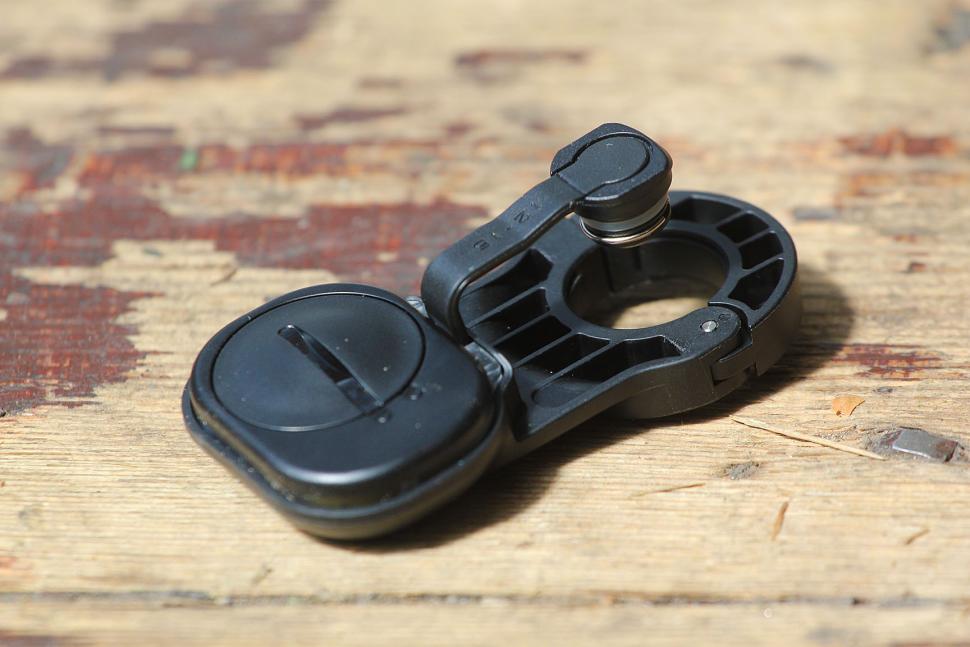
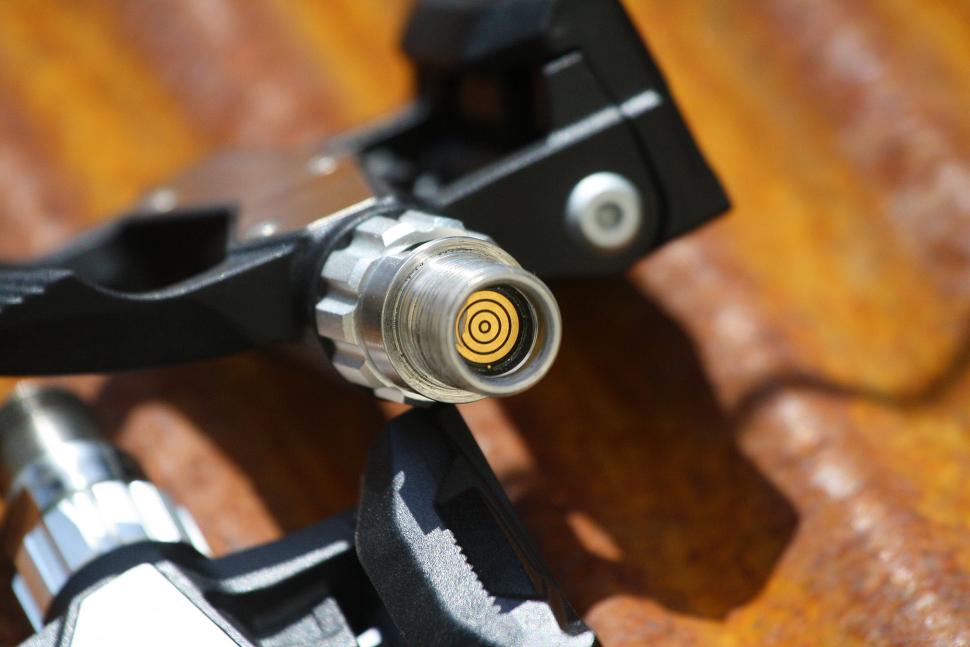

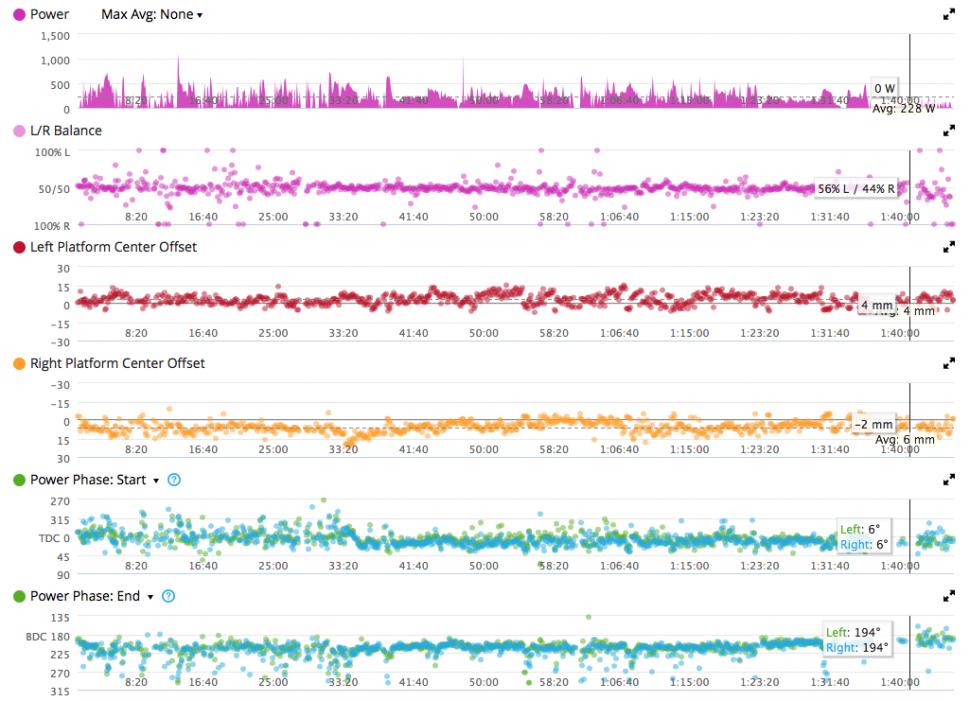
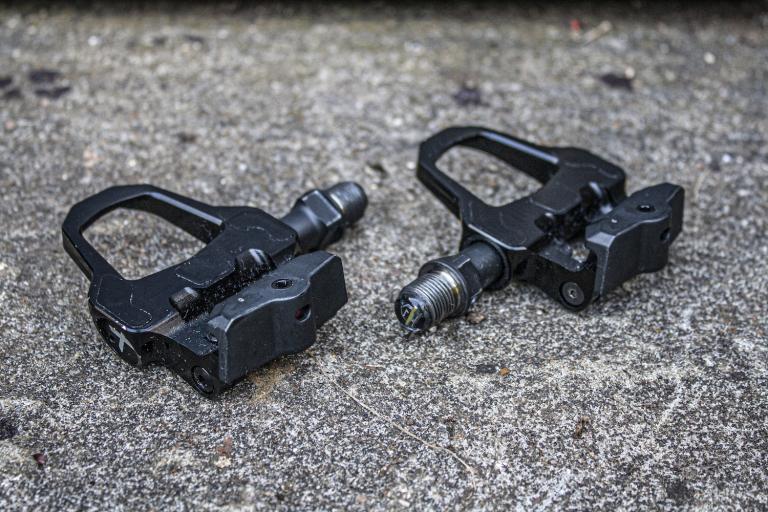
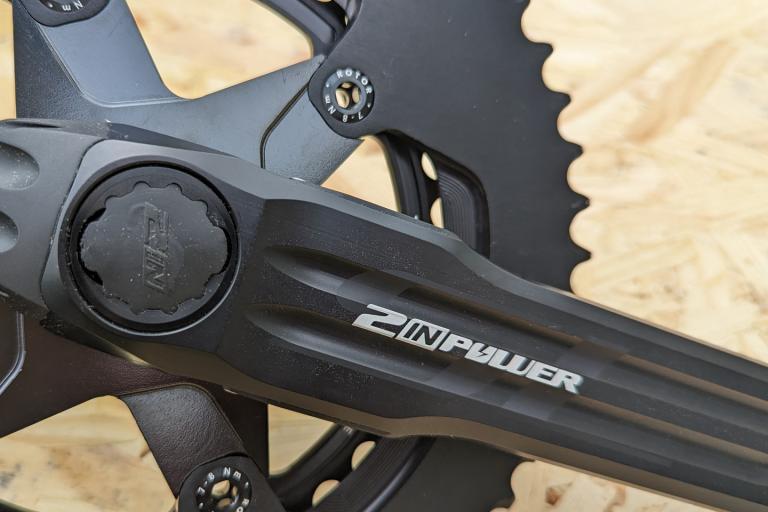


Add new comment
4 comments
http://bit.ly/2bgLGS7
<a href="http://goo.gl/TLJKhQ">contoh konstruksi baja wf</a>
I'm a long term user of Speedplay so hesitate about going across to these, given how good Speedplay has been for my knees.
Can anyone please suggest a reasonable priced pair of Look pedals that have the same release strength and feel as these Garmin Vectors? Keen to give the plain equivalent Look pedal a go first for a few months to check the cleats/pedal work for me first.
The WHOLE concept of pedal based power is flawed due to the real world. Show me a pair of pedals with one season training on them that havnt a impact mark or heavy stratch. This force will render (garmin agrees) the accuracy invalid of the torsion meters.
Just an observation on your comment about being within 2% off 50/50.
If you're at 52/48, then one leg is putting out 4/48 = 8.33% more power than the other, which I would say is quite a big imbalance.
Any experts out there to say if that's significant?